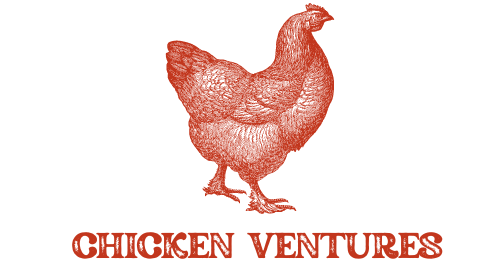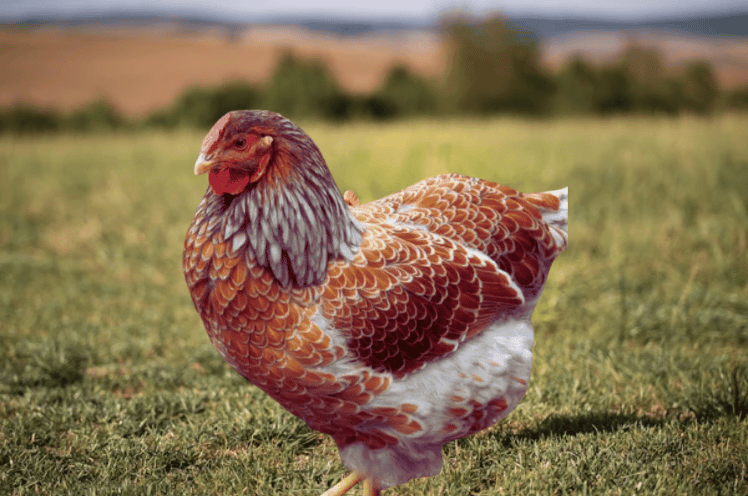People have always loved the Wyandotte chicken breed. The Blue Laced Red Wyandotte has been getting much attention lately because of its unique color. They are lovely chickens that lay great eggs. The American Poultry Association has yet to accept them, but they will likely be soon.
Because this is such a new breed, there are some false ideas about the colors of these birds. Please read on to find out more about these beautiful chickens.
Blue Laced Red Wyandotte Breed History
We’ve already talked about the Wyandotte breed’s history in general, but here we will talk about the Blue Laced Red Wyandotte’s past. The Wyandotte breed came about because a small group of farmers had the same idea of the perfect chicken.
They thought the best chicken could handle cold weather and give them plenty of eggs and meat. Back then, chickens only did one of these things, so having a good hen that could do both would be helpful. The Silver Laced Wyandotte was the first type, and the Gold Laced came out quickly.
The Blue Laced Red, on the other hand, has a more complicated history. At first, people thought that the Blue Laced Red was made in Germany in the late 1800s. But there is written proof that this type was grown in the US and then sent to the UK and maybe even Europe. It doesn’t matter where they were made; these old types were only recently found again.
The first Blue Laced Reds were rare; only a few determined breeders had any. But the recent rise in favor is likely partly due to the unusual color combination. But this breed should be praised for being a good, steady layer and an excellent all-around chicken.
Blue Laced Red Wyandotte Overview
People want blue laced red wyandotte chicken because it is rare in the chicken world, like Ayam Cemanis. This blue chicken, the Blue Laced Red Wyandotte, might be the most well known. The blue lacing on the red feathers makes for a beautiful and exciting pair.
Because they are Wyandotte, they will be a good egg layer and get along with people. It is known that they lay eggs even in the winter. They lay about four giant eggs a week. Wyandottes were bred to live in cold places, so a little snow and ice don’t bother them. They will be OK with enough water and shade, even in hot spots.
The Blue Laced Red is a simple chicken like its sister types. They will be fine as long as you give them the basics of chicken care.
| Lifespan: | 5+ years. |
| Color: | Blue lacing with red feathers. |
| Weight: | Hens (6½lb) Roosters (8½lb). |
| Egg Production: | 4 per week. |
| Beginner Friendly: | Yes. |
| Egg Color: | Brown. |
| Known For Broodiness: | No. |
| Good With Children: | OK. |
| Cost of Chicken: | $30-$40 per chick. |
Why We Love This Breed
Pros:
- Blue lacing on their feathers makes them one of the most beautiful breeds.
- They lay eggs all year long.
- They get along well with other chickens of the same breed and rarely bother other breeds.
- A healthy breed that is strong and can do many things.
- This breed is friendly and gentle.
- Will hatch other eggs that are put in their care.
Appearance
A blue laced Wyandotte chicken has a whole breast and a slight dip in its back. They are all big and round. They have a red rose comb on their head, like their wattles and ear lobes. The eyes are bay red and are set far back, just above a horn colored head. Because she is so heavy, her legs should be yellow because they are short and stocky.
When a Blue Laced Red Wyandotte is young, its under feathers are thick and pale blue gray. From their belly button to their tail, this underfur runs. They have reddish chestnut feathers on their back, breast, and sides laced with gray or blue feathers. Blue feathers on the neck blend into deep red feathers on the head. As chicks, it can be hard to tell the difference between roosters and hens.
Watch how your chicks act if you want to know what’s happening. Roosters tend to be more outspoken, interested, and brave, while hens hang out in the back, are less noticeable, and speak less. The boys will start to grow hackle and sickle feathers at the second molt every 7 to 12 weeks. Around this time, the first weak attempts to croon will be heard.

Size and Weight
Blue laced Wyandotte are all big chickens, no matter what kind they are.
A hen should weigh about 6½ pounds, and a rooster should weigh about 8½ pounds.
The fluff on them makes them look even bigger!
Colour
People can get Wyandotte in a lot of different colors. The Blue Laced Red Wyandotte has blue lacing on its red feathers.
Not all chicken chicks will be this color because it doesn’t breed true.
A Blue Laced Red Wyandotte Chicken: What Is It Like To Owner One?
Blue laced Wyandotte chicken like to be busy, and you can often find them in the wild. They love being able to roam the yard freely. Because she is so good at foraging, they can eat extra food like bugs, seeds, and other tasty things they find while wandering.
If you watch her around other chickens, you might say she is distant or even stiff. They don’t hang out with other breeds very often and would rather be with other chickens of the same breed.
Personality
Our blue laced Wyandottes chicken are calm, obedient, and reliable. Almost nothing can bother a Wyandotte. They are quiet and rarely get upset. They don’t like being around chickens of other types and would rather be with other chickens of the same breed.
Even though they aren’t mean, if another bird tries to bother a Wyandotte, the Wyandotte will finish it off. They make people quickly realize not to mess with them because they won’t put up with being picked on or pushed around. Blue Laced Red Wyandottes are calm and quiet and will get along well with their owners.
But it’s not likely that they’ll become lap chickens. Even though they don’t mind being picked up and hugged, they’d rather not be that close to you. They will enjoy being with you while they search the yard for treats or help your garden, which they enjoy doing. They are great moms and pay much attention to their chicks, but they only get broody sometimes.
Egg Production Of Blue Laced Red Wyandotte

You can count on her to lay about four eggs a week annually. That’s about 200 giant brown eggs a year. Wyandotte’s will reach the point of laying between 16 and 20 weeks, though this date is more often later than earlier.
Blue laced Wyandottes chicken don’t tend to be broody, and they can be hard to breed because they have trouble getting pregnant. She will happily sit on eggs you give her when she is broody.
| Size: | Large. |
| Color: | Brown. |
| Eggs Per Week: | 4 Eggs. |
Noise Levels
The blue laced Wyandotte is a quiet chicken most of the time. They talk to each other, but it’s pretty quiet most of the time. They only make noise when they lay eggs, sound the warning, or roost.
Facts About This Breed
- The United States is where the Blue Laced Red Wyandotte chicken came from.
- This particular shade of color is not an official type.
- Unfortunately, because of their fluffy coats, they don’t have a very high birth rate.
- Good chicks can cost as much as $40 each.
- They rarely get cold because they have a rose comb.
Feeding Of Blue Laced Red Wyandotte
Getting the right food is also very important for this type of chicken. They should be fed crumbles with at least 20% protein when they are chicks (up to 16 weeks old). This makes it easy for the chick to eat.
There are two kinds of 16% layer feed that you can give them once they are 16 weeks old: crumble or pellet. It would help if you gave your laying hens extra calcium as an oyster shell in a different bowl they can use whenever needed.
You can also break up cooked eggshells and use them instead. Last but not least, make sure they always have clean, fresh water.
Coop Setup
Because blue laced Wyandotte chicken are big and fluffy, each one will need 8 square feet of coop room. More space is better, especially if they are sharing with other breeds. Once more, they’ll need a little more space on the porch.
So try to give them 10 to 12 inches of room on the roosts. Blue Laced Red Wyandotte hens will make the most of the space if it’s warm outside. When it’s cold outside, they will curl up closer.
When it comes to stacking boxes, a standard 12×12-inch box will do. You can move around and get comfy, but there isn’t enough space for two birds to share the nest.
Summary
The Blue Laced Red Wyandotte has gotten much attention in the past few years. People might be interested in the color or want something different. You don’t need to look any further for a great family breed. They get along with their owners but aren’t lap chickens like Silkies.
For the most part, she can take care of herself and will lie down all year. The eggs they lay will be beautiful, and they will be happy in your yard. Leave a comment below telling us how your Wyandotte’s fared.

